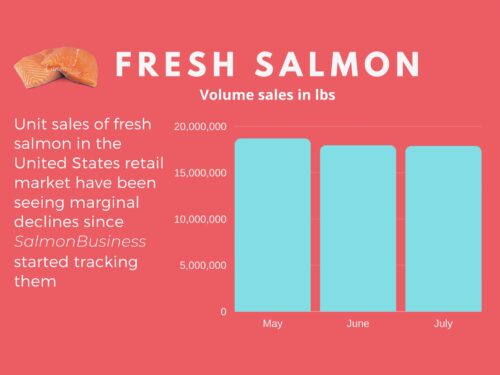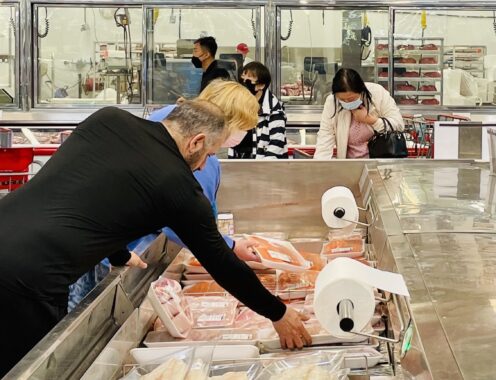The foodservice sector’s re-opening and inflation are erasing the gains made by seafood among American households during the pandemic.
Seafood gained new customers during the height of the COVID-19 pandemic as food establishment shutdowns drove more Americans to eat more seafood a home. The Top 2 favourites of US consumers are shrimp and salmon, but they also tried new types of seafood during the pandemic.

The 28-percent growth in seafood retail sales to $16.5 billion in 2020 over 2019 was maintained through to 2021. In fact, it had even grown by another 0.9 percent in 2021 with fresh seafood leading the growth (4.1 percent), followed by frozen (2.7 percent), according to the industry association Food Marketing Institute (FMI).
But latest data released on Thursday shows that while other animal proteins also saw a decline in unit sales, seafood is the only segment to fall by double digits. For fresh salmon alone, the decline in unit sales remains in single digit, but it is the third straight decline in the three months since SalmonBusiness started tracking them.
“Sustaining those huge increases is currently difficult,” Rick Stein, Vice President of Fresh Foods at FMI, tells SalmonBusiness. “Seafood traditionally has had a strong restaurant following vs cooking at home. Now restaurants, especially the sit-down dining, are back in force.”

Inflation
American consumers that regularly eat seafood typically have higher income. But while seafood may have acquired new consumers during the pandemic, they may now be pushing back because of the high prices, says Stein.
”Meat inflation occurred earlier in 2021; it is also impacted. But seafood inflation is more severe this year than last, so consumers are now reacting to the current inflation pricing in seafood by decreasing their purchases. They are having to make choices in terms of meal spending. They are trading down to more economical products.”
However, he is optimistic the contraction in seafood sales will be short-lived. “Consumers learned to cook seafood at home. Seafood at home is much less than seafood at a restaurant, so I am optimistic that long term, seafood retail sales will recover and prosper.”

Industry opportunity
The “Power of Seafood 2022” report by FMI shows Americans have an appetite for more seafood knowledge including how to buy (70 percent), quality (79 percent), how to cook or prepare (76 percent), nutritional benefits (70 percent), and seafood sustainability (69 percent). This desire for knowledge is also present among non-seafood consumers. It is an opportunity for food retailers and the industry to sieze.
How the seafood was caught or where it is from is important to seafood consumers, the report says further.
“A growing segment of seafood consumers (26 percent) prefer farm-raised seafood citing a variety of sustainability reasons, along with their perception that farm-raised is healthier. Those who prefer farm-raised seafood are younger, more affluent and more likely to be frequent seafood consumers.”
The seafood industry should continue educational initiatives on the health benefits of seafood, showing consumers how easy it is to prepare it and sharing knowledge with the purpose of building trust, the report suggests.









